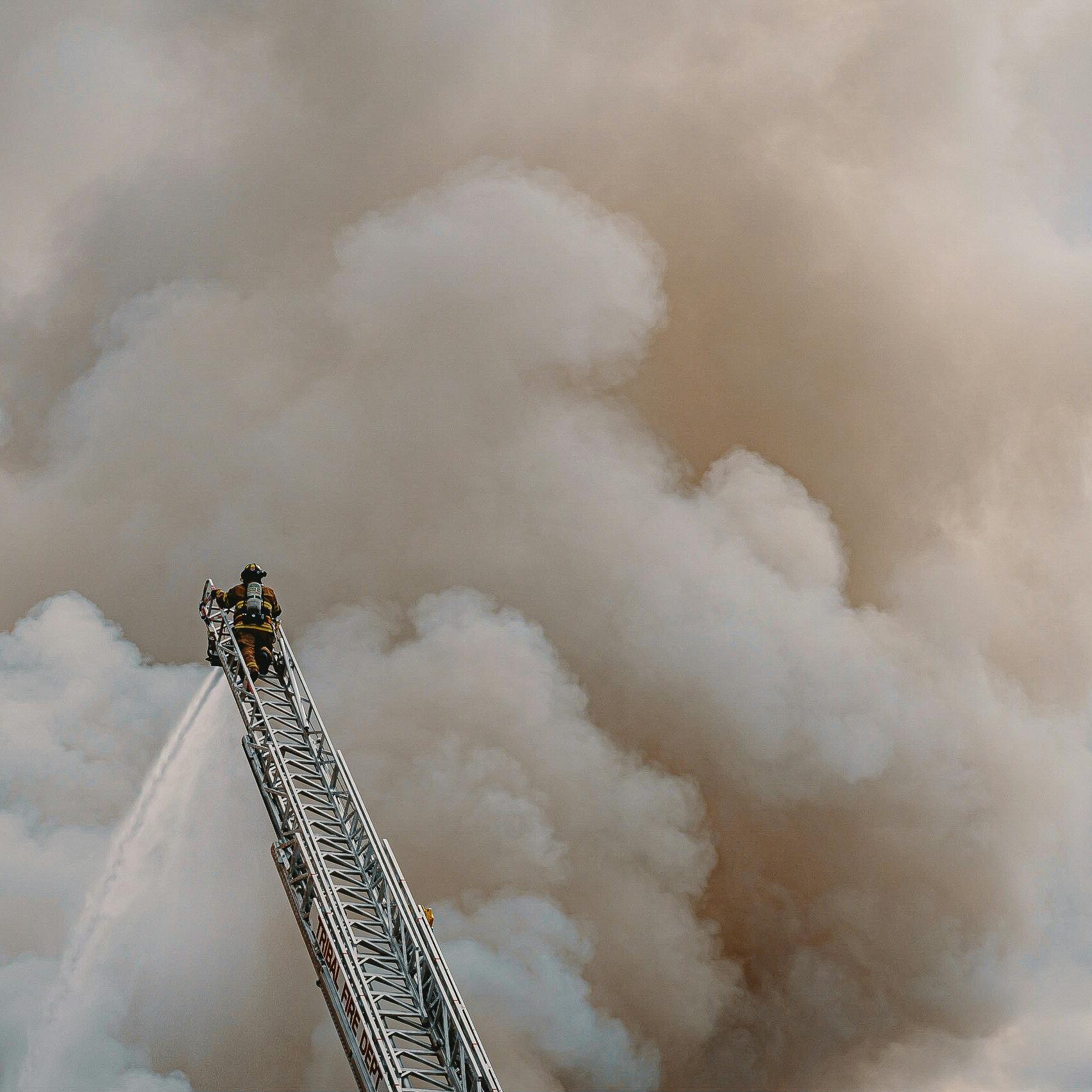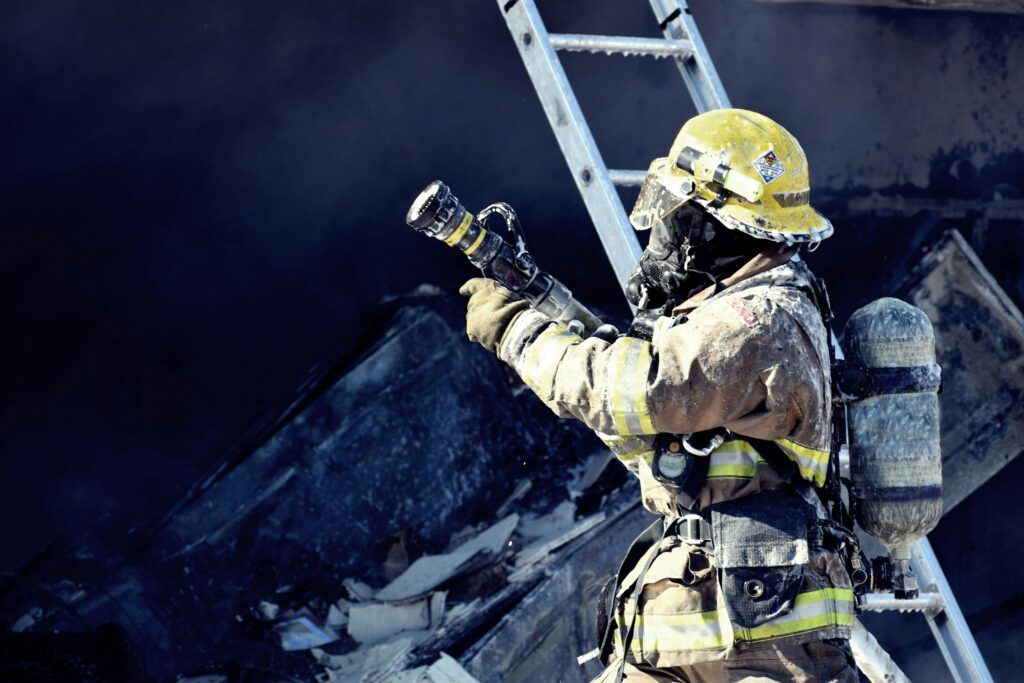What is Aqueous Film-Forming Foam (AFFF)?
Aqueous Film-Forming Foam (AFFF) is a firefighting foam widely used since the 1960s by military personnel, firefighters, and airport workers to combat fuel-based fires. AFFF was praised for its ability to rapidly suppress flames and prevent re-ignition, making it a vital tool in high-risk fire scenarios.
The effectiveness of AFFF comes from its inclusion of per- and polyfluoroalkyl substances (PFAS), synthetic chemicals resistant to heat, water, and oil. However, these same properties that make PFAS effective in firefighting also make them dangerous. PFAS are known as "forever chemicals" because they do not break down in the environment and can accumulate in the human body over time.

Discovery of Health Risks
By the late 20th century, research began to link PFAS exposure to serious health risks. Studies revealed that prolonged exposure to PFAS could lead to:
- Cancers: Kidney, testicular, thyroid, bladder, and more.
- Thyroid disorders.
- Immune system dysfunction.
- Reproductive issues.
These discoveries raised alarm bells, particularly for occupational groups with frequent AFFF exposure, such as firefighters and military personnel. Despite these findings, manufacturers continued to produce and distribute AFFF, allegedly knowing the risks posed by PFAS chemicals.
The Legal Fight Against AFFF Manufacturers
The first lawsuits related to PFAS exposure in AFFF were filed in the early 2000s, targeting manufacturers for failing to warn users about the dangers of their products. Plaintiffs argued that companies knowingly used hazardous PFAS chemicals in AFFF despite evidence of their toxic effects.
By 2018, AFFF litigation gained momentum as studies and public awareness about PFAS contamination increased. In 2019, the Judicial Panel on Multidistrict Litigation (JPML) consolidated thousands of AFFF lawsuits into a Multi-District Litigation (MDL) in the U.S. District Court for the District of South Carolina. This MDL, overseen by Judge Richard M. Gergel, streamlined the handling of these cases and sought to establish accountability for PFAS contamination.



Who is Being Held Accountable?
Major manufacturers of AFFF, including 3M, DuPont, Chemours, and others, are at the center of the lawsuits. The claims allege that these companies:
- Produced and sold AFFF containing toxic PFAS chemicals.
- Failed to warn users about the health and environmental risks.
- Allowed PFAS contamination to spread into water supplies and communities.
Progress of the Lawsuit
As of today, the AFFF MDL includes over 6,000 cases, with more expected to be filed as awareness of PFAS-related health issues grows. Recent settlements and court decisions have established a precedent for holding manufacturers accountable for their role in PFAS contamination.
The Path Forward
The lawsuits seek compensation for individuals exposed to AFFF and suffering from related health conditions. They also aim to fund cleanup efforts for contaminated communities and enforce stricter regulations on the use of PFAS chemicals.
If you or a loved one has been exposed to AFFF and developed cancer or other health issues, you may be eligible to join the fight for justice. Contact The Young Firm today to learn more about your legal options and how we can help.
Frequently Asked Questions
What Does AFFF Stand For?
AFFF stands for Aqueous Film-Forming Foam. It is a foam used primarily in firefighting to quickly suppress fires fueled by flammable liquids like gasoline or oil.
What is in AFFF?
AFFF contains surfactants to create its foam, solvents like trimethyl-trimethylene-glycol and hexylene glycol, foam stabilizers like lauryl alcohol, and corrosion inhibitors. However, the most dangerous components are per- and polyfluoroalkyl substances (PFAS), chemicals linked to severe health risks, including cancer.
AFFF contains several PFAS, including:
- Perfluorooctane sulfonate (PFOS): Found in older AFFF products.
- Perfluorooctanoic acid (PFOA): A byproduct of AFFF manufacturing. Each manufacturer may use additional PFAS specific to their formulation.
Is AFFF Cancerous?
Yes, AFFF is associated with cancer risk. PFAS in AFFF are bioaccumulative, meaning they build up in the bloodstream with repeated exposure. Over time, this accumulation in organs like the liver, kidneys, and thyroid can increase the likelihood of developing cancers in these areas, along with thyroid and digestive system cancers.
Who Was Possibly Exopsed to AFFF?
AFFF exposure primarily affects:
- Firefighters: During training or fire suppression activities.
- Military Personnel: Through on-base firefighting exercises and emergency responses.
- Civilians: Living near facilities where AFFF is stored, used, or has contaminated groundwater.
Exposure can also occur through drinking water contaminated by PFAS, which poses risks to surrounding communities.
Is AFFF Toxic?
AFFF itself isn’t immediately toxic, but the PFAS and PFOS within it are carcinogenic with long-term exposure. The toxic effects are cumulative, meaning repeated use or exposure over time is what makes it dangerous.
PFAS exposure has been linked to kidney cancer, testicular cancer, thyroid cancer and liver cancer.
What Should You Do if AFFF Exposure Caused My Cancer?
At The Young Firm, we have extensive experience handling complex toxic tort lawsuits, including those related to AFFF exposure. If you believe your exposure to AFFF caused an illness, our team is here to help you navigate the legal process. Call us at (504) 499-0779 or fill out our online form to schedule your free consultation today.
